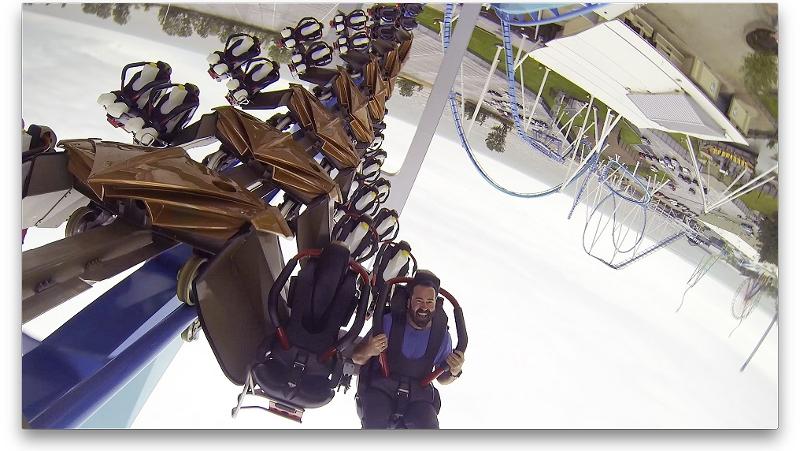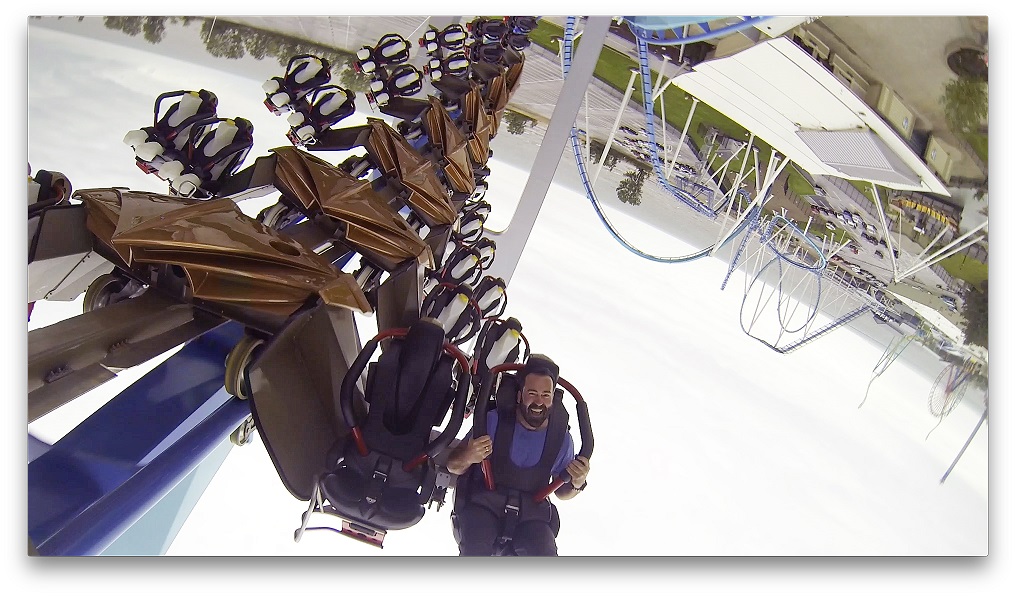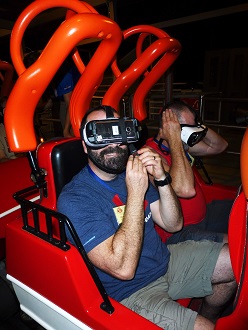
Instead of going to an amusement park to enjoy a rollercoaster or thrill ride, adrenaline junkies could soon pop on a virtual reality headset and board their own high-tech motion simulators to get a similar rush from their lounge rooms, according to QUT researcher Malcolm Burt.
Key points:
- Known as @DrCoaster, Mr Burt leaves next week on a fun park fact-finding mission to Hong Kong, London, Europe and the USA to see how virtual reality is being used in theme park rides
- He says rapid advancements in VR software and hardware, offering home-based VR amusement, may threaten the future of amusement parks
- As the brain can be easily tricked into feeling like it is really on a ride or exploring a park, future customers may pay a subscription to access the theme parks virtually instead of visiting them
- VR advances will help people with restricted movement or budgets but could also create a fatter, lazier and more isolated society

“Amusement parks world-wide are rushing to incorporate virtual and augmented reality now. It’s something they have to do to stay competitive,” said Mr Burt who completed his Research Masters on why rollercoasters exist and created the documentary, Signature Attraction. He is now doing his PhD on exactly what is needed to create the ultimate VR theme park ride.
“VR also allows parks to offer different versions of the same attraction without the traditional expense of physically creating new rides.
“VR can trick the brain into believing you are ‘present’ in an experience, and this is something being explored by all sorts of entertainment industries including sport.
“It’s a safe way to experience an adrenalin rush but I think there are some worrying potential consequences. For example, it won’t help the global obesity epidemic and theme parks are usually something you experience with family and friends. VR has the potential to isolate.”
Mr Burt said traditional theme park enthusiasts were often against adding VR attractions because they don’t see them as ‘real’ but suggests very little about theme parks arguably presents as ‘real’
“I will interview people as they complete a range of VR experiences. These include VR rollercoasters, VR robocoasters, VR motion platform simulators (advanced chair-like contraptions which move in time with what you are seeing and hearing), VR drop rides, totally simulated VR waterslides as well as actual waterslides on which you wear a VR headset, and even VR swinging ships,” he said
Earlier this year Mr Burt was asked by German waterslide company Wiegand-Maelzer to consult on its world-first virtual reality waterslide concept. Now in testing, his trip will take in a visit to it at the Galaxy Water Park in Erding, Bavaria.
“I am also working on an international VR physics education project with a Swedish physics professor, a US/German software company and a US motion platform VR simulator company,” Mr Burt said.
“Theme parks are excellent places to learn physics. This Virtual Theme Park project will see students take in a selection of rides in VR headsets while on a motion platform simulator with the vision of the ride overlaid with g-forces and other effects as part of their physics education. It’s the ultimate marriage of science, technology, education, art and mathematics (STEAM).”
Media contact:
Amanda Weaver, QUT Media, 07 3138 3151, amanda.weaver@qut.edu.au
After hours: Rose Trapnell, 0407 585 901, media@qut.edu.au




